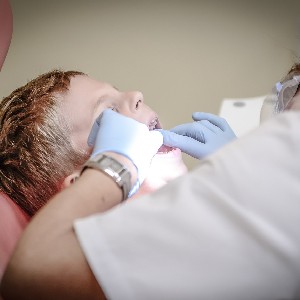Evaluation of radiopacity of cements used in implant-supported prosthesis by indirect digital radiography: an in-vitro study

Accepted: 12 November 2023
HTML: 4
All claims expressed in this article are solely those of the authors and do not necessarily represent those of their affiliated organizations, or those of the publisher, the editors and the reviewers. Any product that may be evaluated in this article or claim that may be made by its manufacturer is not guaranteed or endorsed by the publisher.
Authors
In order to help dentists in choosing the right type of cement for implant-based prostheses, the radiopacity of commonly used cements available in the market was investigated by digital radiography with PSP sensor. In the present study, temporary cements of TempBond (Kerr, Germany), TempBond clear (Kerr, Germany), Dycal (Dentsply, USA) and permanent cements of Multilink N (Ivoclar, Brazil), Panavia F 2.0 (Kurrary, Japan), Fuji plus (GC, Japan), RelyX (3M, USA), Durelon (3M, USA) were used. Four pill-like samples with 0.5 mm and 1 mm thickness and 5 mm in diameter inside the silicon index as recommended by the manufacturer were prepared for each cement. Aluminum step wedge (99% aluminum alloy) was used as control. Using digital radiography, cement and aluminum step wedge samples were radiographed. The images of cement tablets were measured by digital radiography using DFW software to check their radiopacity values. Bonferroni test and Mann-Whitney U test were used for comparison of cements. The highest radiopacity between the group of 1 and 0.5 mm thickness was related to Glass ionomer Fujiplus GC (2407±45.99) and TempBond (137.21±22.46) cement, respectively. Whereas, the lowest radiopacity among the groups was related to Clear cement. The difference between the mean radiopacities among the studied groups was statistically significant (p<0.001). Based on the results, among the available cements, Glass ionomer Fujiplus GC and TempBond cement are the most efficient for 1 and 0.5 mm thickness, respectively, and Clear cement is the least efficient cement in both groups in terms of radiopacity.
How to Cite

This work is licensed under a Creative Commons Attribution-NonCommercial 4.0 International License.
PAGEPress has chosen to apply the Creative Commons Attribution NonCommercial 4.0 International License (CC BY-NC 4.0) to all manuscripts to be published.

 https://doi.org/10.4081/ejtm.2023.11940
https://doi.org/10.4081/ejtm.2023.11940



